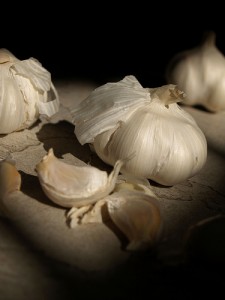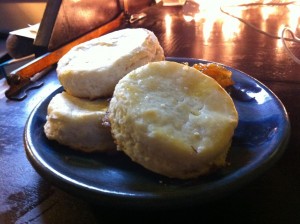
Proper British Scones
 In honor of Sunday, which as every one knows is for sleeping in, reading the paper, and dawdling endlessly over delicious coffee and even more delicious baked goods, I made scones today.
In honor of Sunday, which as every one knows is for sleeping in, reading the paper, and dawdling endlessly over delicious coffee and even more delicious baked goods, I made scones today.
I have been looking for years for a decent recipe for scones. Back when I was a cook in Northampton, I used to work with a guy who would whip them up out of a recipe in his head for the kitchen staff during brunch shifts. When I left that job, I made him write down the recipe for me, and for many years I had that scrap of paper tucked in my old 1898 Fannie Farmer cookbook. Now I've lost both cookbook and scone recipe, and it has put me in a tight spot, I can tell you.
It is hard to find a decent scone recipe in these parts. In the States, it seems that we can't abide a baked good that isn't drenched in sugar and cakier than cake itself. The idea of a dense, rich, almost semi-sour biscuit, with only the merest hint of an egg wash glaze on its golden brown skin, seems harder for us to fathom than differential calculus.
I failed at calculus, but I know a good scone when I taste one.
The best scone I've had in recent memory was at a place called The Courtyard Cafe in Bath. It was across the alleyway from the more famous and somewhat gaudy Jenny Lunn Historic Eating House and Museum -- a bit of a mouthful for what is essentially a rickety old bake shop.
After our day in Bath, Melissa and I continued our researches in pursuit of the ultimate scone, but we never found anything to exceed the ones we had at the Courtyard Cafe. So when we got back to the States, I started looking for a decent recipe, so that I could at least try to replicate the experience.
I went to my trusty old friend, The Internet, but mostly what I found was the sweet, sugar-glazed, cakey variety referenced above. Eventually, I began to stumble across websites that ended in .co.uk, which told me I was finally on the right path. When I found recipes that gave the lists of ingredients in grams instead of cups and tablespoons, I knew I was in the right place.
So I experimented for a series of Sundays. (What I won't suffer for my research, I tell you.) Eventually, I came up with this hybrid recipe, which I am still using, and will continue to use until I hear of an improved version. You are quite welcome to turn me on to YOUR amazing scone recipe. Believe me, I will not be at all put out if yours is better than mine. I will most likely kiss your toes.
Beth's Proper British Scones
Preheat oven to 425 degrees. Line a baking sheet with parchment paper.
2 cups flour
1 ½ tsp baking powder
2 ½ tsp sugar
½ tsp sea salt
4 ½ Tbs butter (cold)
⅔ cup milk (+ 1 Tbs for egg wash)
1 egg yolk1. Mix together flour, baking powder, sugar, and sea salt.
2. Drop in the butter in tiny cubes and work with fingers until no butter is larger than a pea. Add the milk and mix briefly, just enough to bind the wet with the dry. Do NOT overmix.
3. Drop onto a well-floured board and knead very quickly only 3-4 times.
4. Pat into a circle about 1 inch thick and cut out scones with a small glass or cookie cutter. Knead together remaining dough and cut out more scones until all the dough has been used.
5. Beat the egg yolk lightly with one Tbs of milk and brush the tops of the scones with mixture.
6. Bake on baking sheet lined with parchment paper for 13-15 minutes or until golden brown. Cool on a wire rack.
Serve warm with clotted cream and jam. Or don't, if you're anywhere outside of the UK, and serve instead with a forlorn little mound of butter and a pot of orange marmalade, and wonder how much it would cost to have clotted cream shipped to you in small batches.
Then go to your favorite cheap airfare website and buy the damn plane tickets to London.
You guys, scones are getting really expensive!

